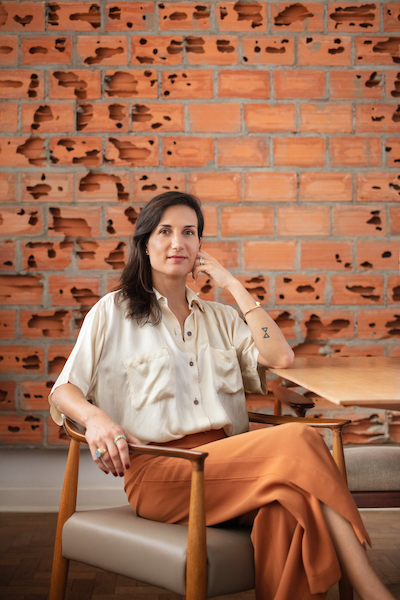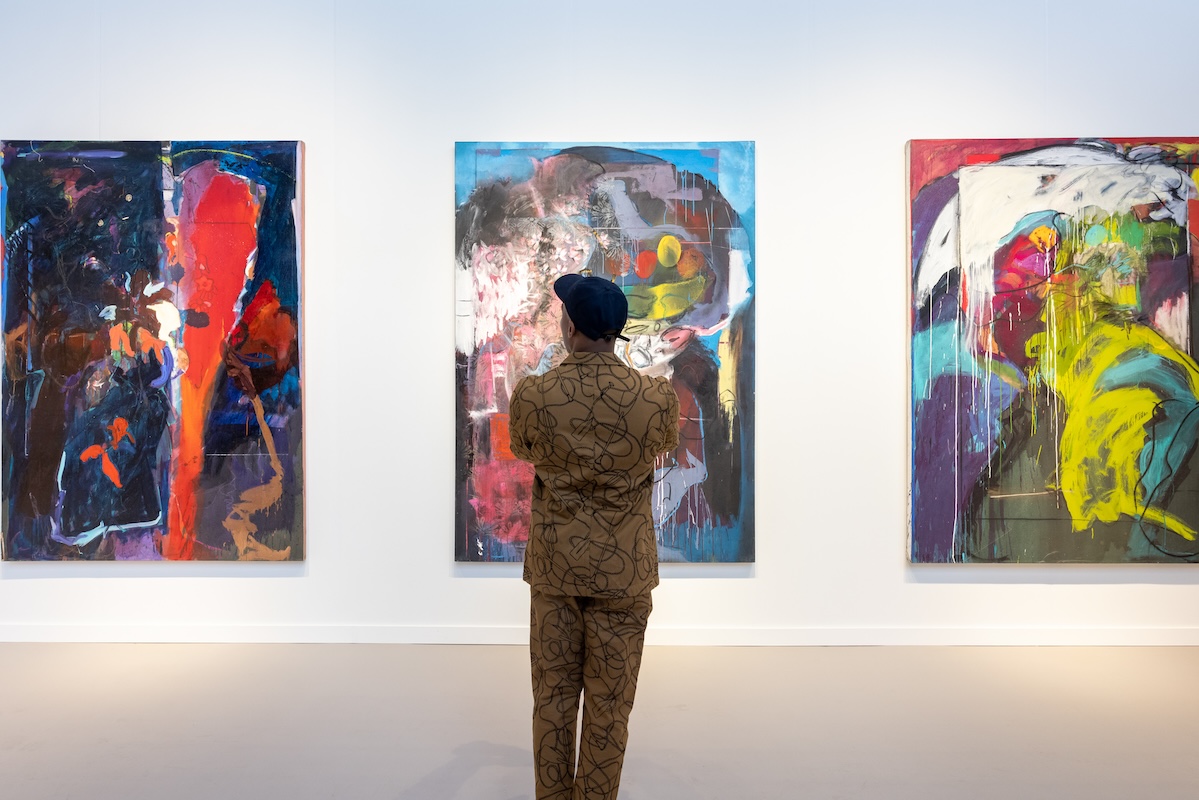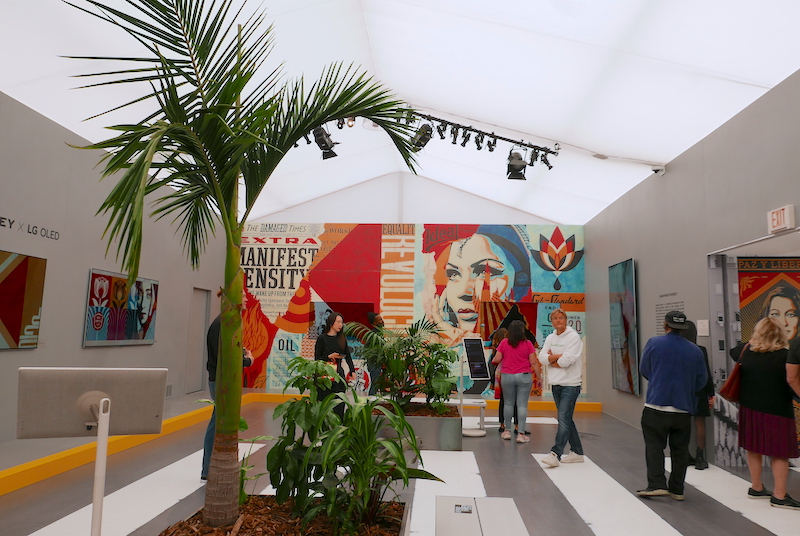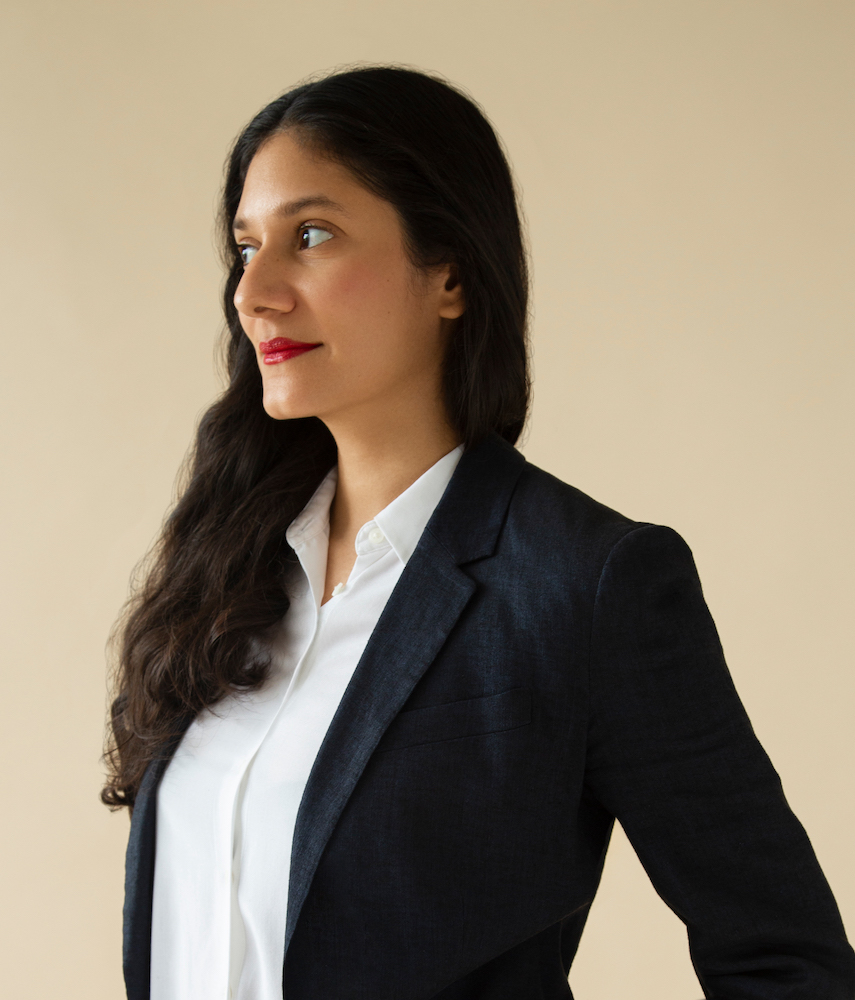A personal evolution in contemporary art
When Camilla and Eduardo Barella started buying art for their first home together, they had no intention of building an art collection. Soon, as often happens when it comes to acquiring contemporary art, they found themselves going to galleries and museums every weekend, and when they planned their calendar for the year, their time off was spent visiting fairs abroad, rather than going to the beach. As the walls in their home began to fill up, and they still kept acquiring, they realized that they had something special. They also started to see that they tended to be attracted to more conceptual works—installations, videos, sculpture, and drawings. One day they assessed they had not one oil on canvas.
In parallel with their growing collection, Camilla found herself moving away from her career in fashion and working more and more in the arts. Eventually becoming Frieze art fair’s VIP consultant for Latin America, she co-founded VIVA Projects in 2016 and the art fair ArPa in 2022. Whitewall spoke with Camilla about the evolution of her work in contemporary art alongside her growing collection.
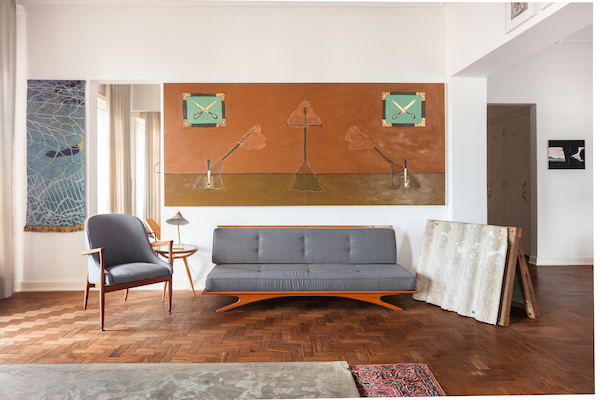
Work by Renata Lucas (foreground), Otobong Nkanga, Dalton Paulo, Adriano Costa, and Wilhelm Sasnal (background, left to right); photo by Gui Gomes, courtesy of the artists.
WHITEWALL: Let’s go back to the beginning. From where did your interest in art stem?
CAMILLA BARELLA: I’ve always been interested in art in a general aspect— music, cinema, visual arts. I would go to museums, the São Paulo biennials. I don’t come from a family that collects, but they would always take me to museums and exhibitions. I studied fashion design, and so during college I took art history, which gave me a good base on visual arts. And then it was my personal interest. I started researching more and going to galleries and museums.
My husband comes from a different background. He grew up in the countryside. I grew up here in São Paulo, so I had proper access to the museums and galleries. He works in engineering, so art was a different kind of world for him. When I got married and we had our first proper home, I thought, “Let’s start going to the galleries and seeing young artists.” We didn’t intend to have a proper collection; it was not part of the plan. It was just to buy for the walls of the home.
WW: But of course that changed! How did it start turning into a proper collection?
CB: Little by little we were going to galleries—and we were not always very welcome, I have to say. We were quite young and no one was taking us there. We were not the son and daughter of someone that already collected. This was 15 years ago. It was more of a closed world. Finally, we found this gallery that represents artists from our generation—many of them based here in São Paulo. And that was very good access for us because we had the chance to also meet the artists, and of course, they were more affordable because they were young back then as well.
That’s how we started buying. Then we wanted to go every weekend to galleries and museums and exhibitions, and suddenly you realize you are buying without having a place to hang the work. That’s when you realize that you are collecting. We started going to the fairs and putting that as a priority on our agenda. When you have time off, instead of going to the beach, you go to Frieze London.
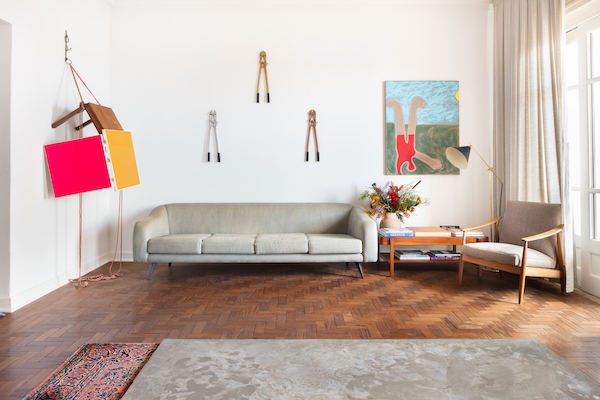
Works by (left to right) Mariela Scafati, Marcelo Cidade, and Bertô; photo by Gui Gomes, courtesy of the artists and Camilla Barella.
WW: What are some of the must-go fairs for you?
CB: The first international fair we went to was Frieze London, and I think it was a very good start for us. And then Basel, Miami Basel—we always try to do both fairs and one different one each year. Like Artissima and also the Latin American art fairs like ZONAMACO, and ARTBO in Bogotá. They are very nice to visit to see the scene in the city as well. And again, the collections are always fun, and the Latin Americans know how to host and welcome and party.
It’s changed, though. What first changed was that we had kids in 2016. We had twins, and then 2017 I started working with Frieze as a VIP consultant, and in 2018 I had another daughter. So we were not as flexible as before for traveling. And then, of course, I go to every Frieze—London, New York, and now it’s L.A. and Seoul.
“Instead of going to the beach, you go to Frieze London.”
WW: Early on, were you mostly looking at work by artists of your generation?
CB: Mostly artists from our generation, and right in the beginning Brazilian, but we opened to the world very quickly. We never had this focus on one nationality or one region. It was mostly conceptual pieces. We bought a lot of videos in the first years that we were collecting. And I joke that that’s why the galleries liked us, because we would buy the most difficult pieces from the shows.
WW: That’s a good strategy for a young collector!
CB: It wasn’t an actual strategy! But there was even a point where we realized, we don’t have oil on canvas. It’s the most traditional media; everyone starts with that. We’ve been collecting for some years and we have drawings, we have watercolors, we have videos, installations, photos, sculptures, but we don’t have one single oil on canvas.
It’s always important to challenge yourself and look into what your eyes go first to. We would buy mostly conceptual art, and a lot of the art is politically engaged and very provocative. But we don’t have one single line. We could make rational connections between some artists and those artworks. But at some point I said to Eduardo, it’s a personal collection; we can buy one thing just because we think it’s beautiful. We don’t need to justify it with some kind of theory. We’re not an institution. I think this is part of the fun, this freedom to follow your intuition. I want to be surprised.
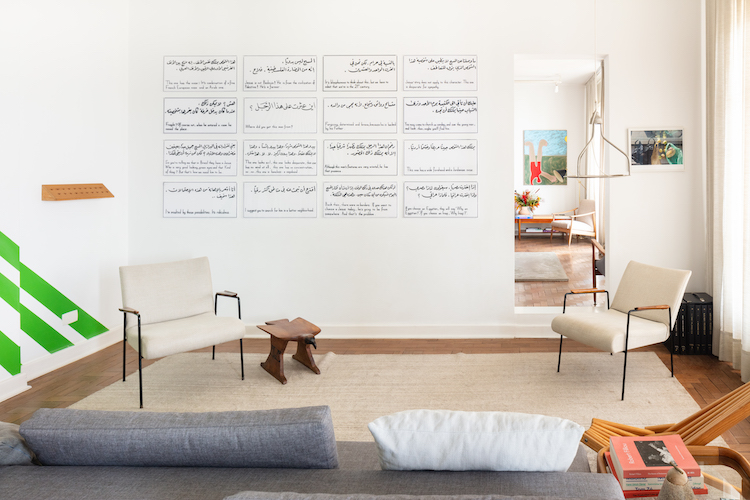
Works by (left to right) Jonathas de Andrade, Wolfgang Tillmans, and Paulo Bruscky; photo by Gui Gomes, courtesy of the artists and Camilla Barella.
WW: In 2016 you also co-founded VIVA Projects, a strategic consultancy for galleries and institutions, helping to produce artistic activations in a variety of settings. You’ve done billboard projects, public interventions with artists like Raul Mourão, a radio series, even artist floral bouquets! How did VIVA Projects begin?
CB: As I said, I had studied fashion design and had a consultant company focused on textiles. Little by little, I was getting more involved with art. I used to say it was my part-time job, because it was a priority going to biennials, et cetera.
I was invited to do some projects: an exhibition at Mendes Wood DM in 2014 and then a project in a restaurant, and soon I was doing professional projects in the arts. I was already investing a lot of my time in that, and for me it was more challenging and fulfilling than the fashion industry. So I decided to switch my career. Cecilia Tanure, my partner at VIVA, had a long experience in galleries, and she wanted to do something new. So we started creating VIVA. VIVA was a very hybrid idea to do projects with the art world that wouldn’t be in an institution or in a gallery.
WW: It feels like there is a parallel between your career and collecting—a following of your interest and passion and a trust in your intuition.
CB: What I think is most important in our act of collecting is this interest in the process. We collect together. We discuss a lot about not only the artists but the pieces. Sometimes I like something that he doesn’t like or it’s the opposite. It’s not that we try to convince each other, but we try to find out, what do you see that I don’t see? We’re very interested in that process of learning, of exchanging with each other, gallerists, curators, artists.
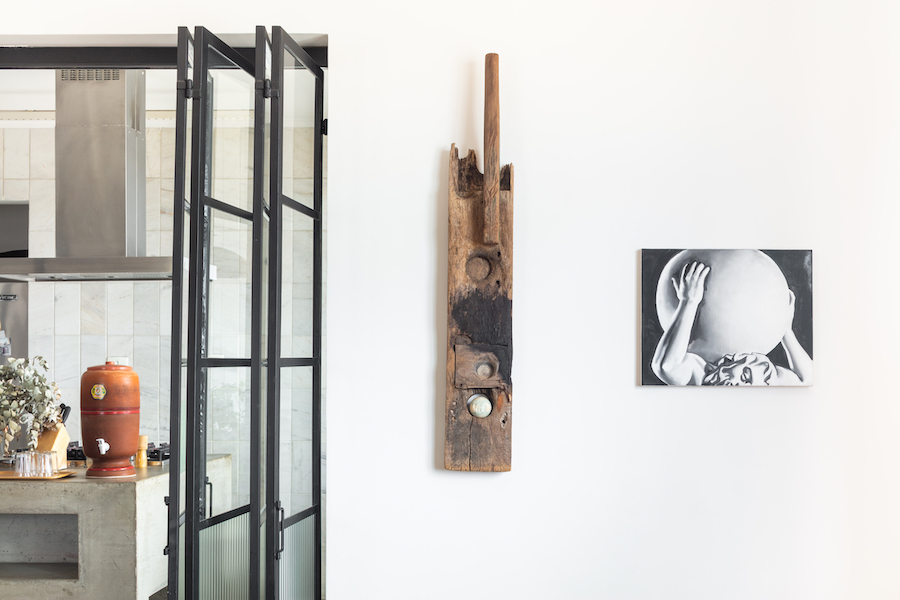
Work by (left to right) Bené Fonteles and Wilhelm Sasnal; photo by Gui Gomes, courtesy of the artists and Camilla Barella.
“I think this is part of the fun, this freedom to follow your intuition.”
WW: Is it important for you to get to know the artists whose work you collect?
CB: Yes, if we can we always like to meet the artist and go to their studios. Some of the artists that are based here in São Paulo we’ve become quite close to. And one thing that we always like to do is ask the artists which artist they like. It’s a great way to find out about new artists. For us, it’s an important part of collecting. You learn a lot from them.
WW: This June, you’ll organize the second edition of ArPa in São Paulo. How did you find yourself producing an art fair?
CB: It was not that I intended to have an art fair. The association of galleries from Brazil wanted to have a new art fair in São Paulo. They came to Pacaembu Complex, the space where we are doing the fair, with the idea of doing a project. We started working together, VIVA and Pacaembu. We didn’t know if it was going to be a proper fair. We first did a commercial exhibition of sculptures with galleries throughout the whole complex at the end of 2020.
That evolved to the project of the fair. We started talking with the galleries, and we did the first edition in June of 2022, and together with MADE the design fair. It’s a small to medium fair, around 50 galleries, and we intend to keep this size, with a cozy atmosphere, more intimate. Galleries can’t show many artists—a maximum of three—to give more depth into the artists you see. We have only two sizes of booths, and then a solo section. There’s less hierarchy in the fair.
The art fairs are helpful for young collectors in that it’s a commercial moment where you can ask the prices, you can talk to people. It’s a much more welcoming atmosphere than opening the door of an empty gallery. It has helped many cities and countries to make their art market stronger. Part of the purpose of the fair is to make this connection between Brazil and the rest of the world. And also to make our art scene here stronger, to build more collectors, so more artists can live from their work. I want to see how I can make a difference in that sense.
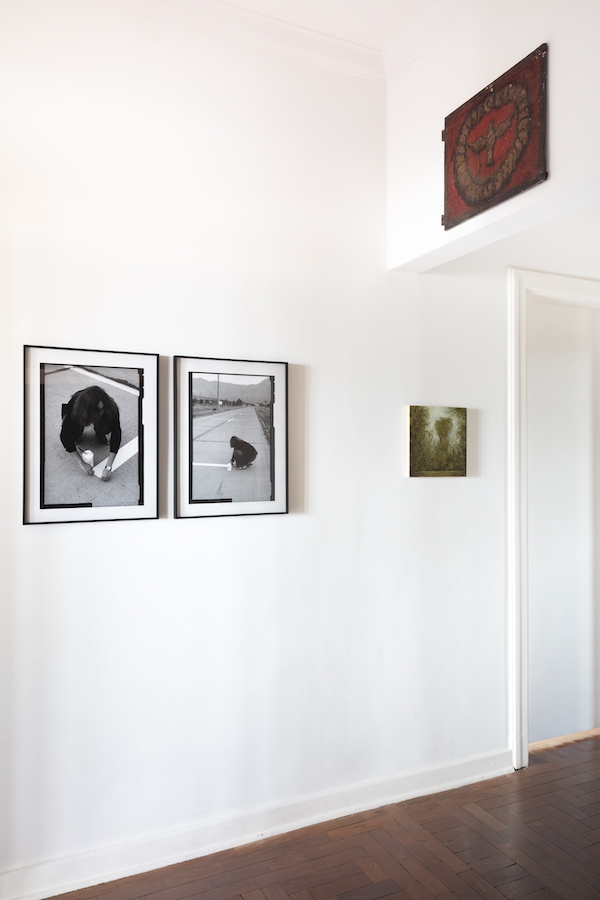
Photo by Gui Gomes, courtesy of Camilla Barella.
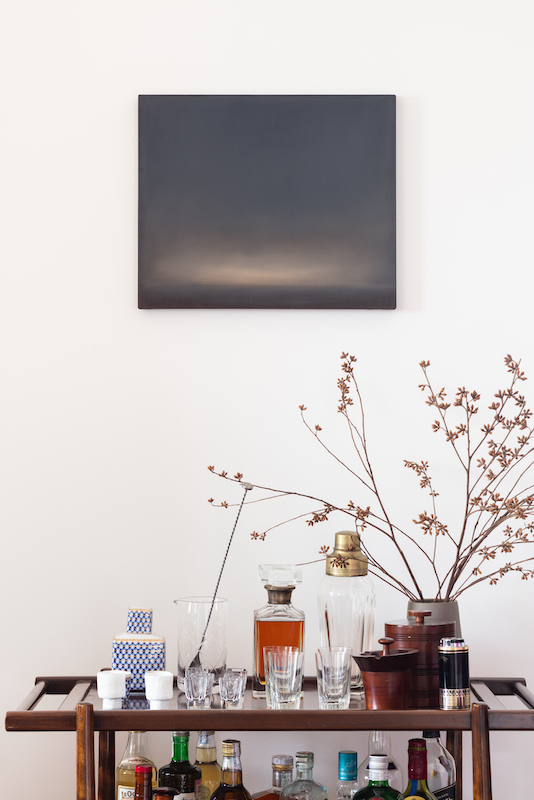
Work by Lucas Arruda; photo by Gui Gomes, courtesy of the artist and Camilla Barella.
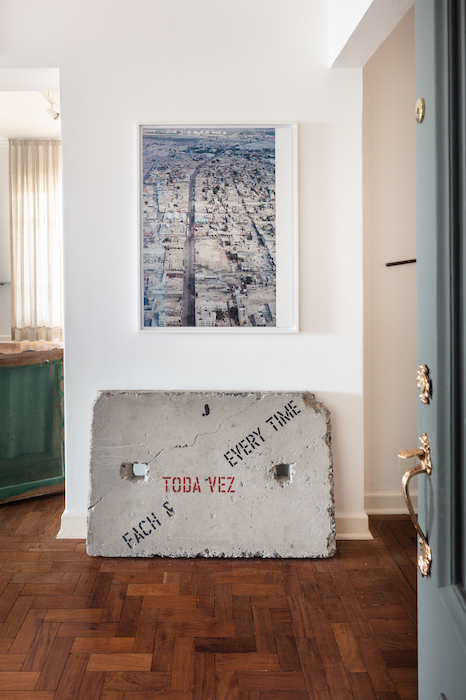
Photo by Gui Gomes, courtesy of Camilla Barella.



